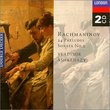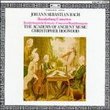| All Artists: Beethoven, Toscanini, NBC Title: Symphonies 4 & 6 Members Wishing: 0 Total Copies: 0 Label: RCA Release Date: 1/18/1991 Genre: Classical Styles: Historical Periods, Classical (c.1770-1830), Symphonies Number of Discs: 1 SwapaCD Credits: 1 UPC: 090266025428 |
Search - Beethoven, Toscanini, NBC :: Symphonies 4 & 6
 | Beethoven, Toscanini, NBC Symphonies 4 & 6 Genre: Classical
|
Larger Image |
CD DetailsSimilarly Requested CDs
|
CD ReviewsThe Maestro's Polished Commercial Beethoven Series 07/18/1999 (4 out of 5 stars) "The sound quality of this live broadcast of the Fourth Symphony,from Carnegie Hall of February 3, 1951, is marginally substandard, compared to some better line check recordings on commercial RCA labels of fifties' Toscanini programs (such as the Eroica of '53 in Vol. 29, or the Gluck Orfeo Second Act in Vol. 46.) The first 30 to 31 seconds of the transfer come, unmistakably, from a lacquer disk, possibly from an alternate source, or even perhaps from the dress rehearsal; there is evidence of mechanical noise, scrape, and faint ticks and pops (but not more than one would hear if playing a well-preserved old LP); at 31 seconds, a transition is made to a tape recording that was taken down, I surmise, at some distance from Carnegie Hall, and may even be the actual NBC radio network line program feed that left New York: one can hear dial pulses from a telephone company "Strowger" switch at several points during the first movement, and these are crisp and clear, with sharp transients, so the RECORDING medium, per se, was good or the high frequency clicks would have been muted. The high frequencies of the orchestral pickup, however, are somewhat dull, and have little -- if any -- energy above about 10 kHz, with a recessive top end with little bloom and life, and almost no trace of Carnegie Hall room tone.Interestingly, the later Red Seal transfer, issued in 1999, uses the same "composite" source tape and has the same edits and noises.That being said, the recording is not bad, but is not as well defined as a technical leap forward over the mechanical disk era as, say, the taped Beethoven Ninth of '52 is, when compared to the transcription disks of the live 1948 Beethoven Ninth that sourced the BMG video of the Toscanini telecast. The performance surely has never sounded as fine as other commercial Toscanini releases of the early fifties: even the first edition of the Marsh book notes "I have listened to a copy of the original tape and can report that the disk reproduces the sound of the source recording well, though it is not less cramped and dry for that...the refurbished master...is still faulty, with excessive treble and phony-sounding resonance and insufficient bass.""
|

 Track Listings (9) - Disc #1
Track Listings (9) - Disc #1





![Brahms: 21 Ungarische Tanze [21 Hungarian Dances / 21 Danses Hongroises]](https://nationalbookswap.com/cd//m/94/0094/6020094.jpg)


